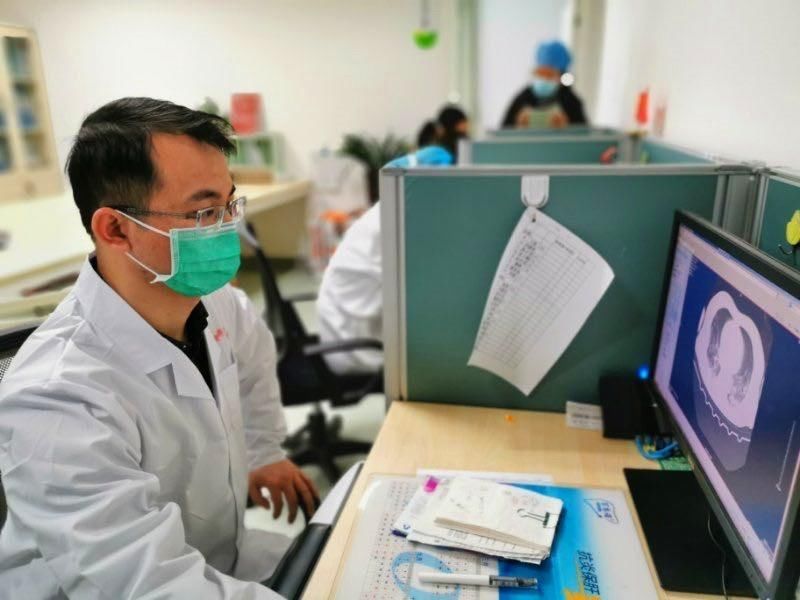Correspondent Zhang Quanlu
3 adults, aged 22, 27, and 28, were unable to walk due to honeycomb cystic lesions on the lungs, repeated anti-infection was ineffective Less treatment detours, until recently came to Wuhan Pulmonary Hospital, they were diagnosed with the same “pediatric” common and rare adult disease – congenital lung adenomatous malformation. Currently, the three are recovering well after surgery.
Among the 3 patients, a 22-year-old patient, Xiao Zhang (surname changed), has daily asymptomatic manifestations. During a physical examination last year, a shadow in the upper right lung was accidentally discovered. In several hospitals, it was considered a lung infection, but anti-infective treatment was ineffective. After further examination at Wuhan Pulmonary Hospital, it was found that these nodules were cystic lesions with clear boundaries and low density.
The 27-year-old patient Xiao Zhou (surname changed) was found to have a honeycomb abnormality in the lungs when he was a child. He has also been to many hospitals and has undergone multiple treatments, but the lesions have not completely disappeared. Usually susceptible to colds and coughs, and every examination indicates the possibility of congenital lung disease, but it cannot be further cured.
The 28-year-old patient Xiao Zhao (surname changed) was admitted to hospital because of cough and expectoration. Examination revealed multiple patchy, streaky lesions in the upper lobe of the right lung. Cord-shaped high-density shadow, local formation of thin-walled cavities, multiple bullae, forming a honeycomb.
The above 3 young patients had different symptoms, but all had cystic lesions on the lungs, but the presentation was slightly different. After anti-infective treatment, the infection is often temporarily controlled, and then repeated, and the cystic lesions cannot be finally eliminated.
According to these common characteristics, experts from the Department of Respiratory Medicine, Surgery, Radiology and other disciplines of Wuhan Pulmonary Hospital conducted consultations. Common pediatric diseases – “cystic adenomatous malformation of the lung”.
Finally, the above three patients received surgical treatment, and the intraoperative pathological examination confirmed the correctness of the expert’s inference. Currently, three patients are recovering well.

Yang Chengqing is observing the patient’s CT film
Yang Chengcheng, Deputy Chief Physician of the Second Respiratory Ward of Wuhan Pulmonary Hospital, introduced: The cystic adenomatous malformation of the lung is the process of embryonic development. ) branch development deformity, the distal end gradually expands to form a cecal sac, the mucus secreted by the cells in the sac cannot be discharged and accumulates and expands to form a vesicle. As the disease progresses, the vesicles gradually increase, eventually forming an “adenomatous” deformity. Cystic adenomatous malformation of the lung (CCAM) is one of the more common lesions in children, however case reports in adults are rare. It is not easy for non-pediatricians to consider it, and it is easy to cause misdiagnosis.
Yang clarified that the disease often presents as single, multiple cystic or cystic-solid lesions, all of which have a certain mass effect. Specifically, there are three types of cystic morphology. Type I CCAM can be manifested as monocystic, oligocystic, or multicystic lesions in the lung. The cystic cavity can be large or small, with or without air-liquid level, and it can also manifest as a cystic-solid lesion with more solid components. Type II CCAM manifests as a honeycomb-like cystic space-occupying lesion of similar size, and can also manifest as a solid lesion. In contrast, type III CCAM usually presents as a mass-like soft tissue density shadow, with or without small cysts (diameter < 0.2 cm).
Yang clarified that in adult patients, if a typical cystic or cystic-solid mass is found in the lung, enhanced scanning of the cystic wall and solid Part of the more uniform enhancement, you need to consider the diagnosis of CCAM. The existence of this disease can easily cause repeated infections in the lungs, and anti-infection treatment is only temporary and cannot solve the root cause. The best treatment method is surgery.